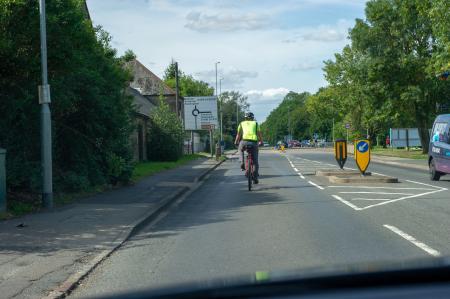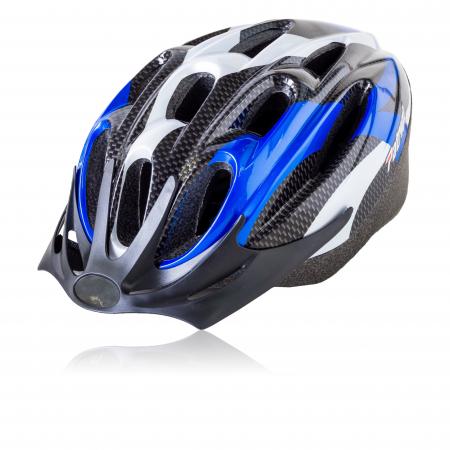
It is estimated that the number of life years gained due to the health and fitness benefits of cycling in Britain outweigh the life-years lost through injuries by a factor of around 20:1.
That said, it is important to remember some simple things to help you stay safe whilst cycling.
Staying safe on the road
Plan your journey beforehand to avoid the busiest routes. If you are going to be cycling at night, it may be useful to test the route out in the daytime first.
- Look ahead and identify the course needed to avoid hazards and make manoeuvres.
- Observe all around for other road users (including pedestrians) who may cause obstruction in your course.
- Signal your intentions clearly and well in advance of making your move.
- Try to make eye-contact with drivers at junctions to be sure they have seen you or watch the car wheels in case they begin to move.
- Ride in a strong and confident position well clear of the kerb. This makes you part of the traffic and easier for you to see and be seen.
- Be assertive and prepared to ride in the middle of the lane, also known as primary position, if you need to - this encourages vehicles to stay behind you when it may be unsafe for them to pass.
- Be wary of passing large vehicles such as lorries and buses to the left (undertaking), especially at junctions - if they turn left, the driver may not be able to see you if you are in a blind spot.
- Above all, follow the Highway Code – don’t jump red lights and don’t cycle on the pavement unless it is a designated cycle-way.
- A little wave or thumbs up, thanking other road users for giving way to you or for giving you room never goes amiss.
Your confidence and assertiveness will grow the more you cycle in traffic, but if you would like to learn more about cycling with confidence, visit our cycle training pages.
Helmets
Wearing a helmet is a matter of personal choice. Whilst a helmet won't prevent accidents from happening, it can provide protection if you do fall off your bike. They are particularly recommended for young children.
What is important if you do wear a helmet is to ensure it is fitted correctly. This guide explains how a helmet should be worn:

Using shared-use routes
Many towns within Northamptonshire have shared-use cycle/footways that allow cycling alongside pedestrians. These are usually along key routes or alongside busy roads that may be less suitable for more inexperienced riders. They should usually be clearly signed.
While these routes can be very useful for many cyclists, it is important that you are considerate to all users and remember you may have to cycle slower than you would on the road.
Remember to:
- Ring your bell
- Pass slowly
- Say thanks
Download our Cycling Courtesy Leaflet below for more information on etiquette when using shared-use routes.
The Sustrans website also offers further advice here.